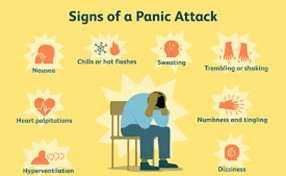A nurse is planning care for a client who has a history of urinary tract infections (UTIs) and requires placement of an indwelling urinary catheter.
Which of the following actions should the nurse take to help minimize the client's risk for acquiring a UTI?
Loop the tubing so that it is lower than the collection bag.
Keep the urinary bag at bladder level when ambulating.
Obtain urinary samples by disconnecting the tubing connections.
Secure the catheter to the client's thigh.
The Correct Answer is B
Choice A rationale:
Looping the tubing so that it is lower than the collection bag creates a dependent loop where urine can pool, increasing the risk of UTI. This practice should be avoided as it can lead to bacterial contamination and subsequent infections.
Choice B rationale:
Keeping the urinary bag at bladder level when ambulating helps maintain a continuous flow of urine into the collection bag without creating dependent loops. This practice minimizes the risk of bacterial contamination and reduces the chances of acquiring a UTI.
Choice C rationale:
Obtaining urinary samples by disconnecting the tubing connections is not recommended. This procedure can introduce bacteria into the urinary system, increasing the risk of UTI. Sterile techniques, such as using a catheter port for sampling, should be followed to minimize the risk of infection.
Choice D rationale:
Securing the catheter to the client's thigh is essential to prevent tension and pulling on the catheter, which can cause trauma to the urethra. However, securing the catheter alone does not minimize the risk of UTI. Proper hygiene, closed drainage system, and maintaining a continuous flow of urine into the collection bag are key factors in preventing UTIs in clients with indwelling urinary catheters.
Nursing Test Bank
Naxlex Comprehensive Predictor Exams
Related Questions
Correct Answer is B
Explanation
A. Incorrect. Encouraging the client to watch television might not provide the calming presence and support needed during a panic attack.
B. Correct. Sitting with the client and providing a sense of security can help them feel more grounded and supported during the panic attack.
C. Incorrect. Atomoxetine is not typically used to treat acute panic attacks. It's a medication used for attention deficit hyperactivity disorder (ADHD).
D. Incorrect. Teaching the client how to meditate might be beneficial in the long term, but during an acute panic attack, the client may not be receptive to learning new techniques.

Correct Answer is D
Explanation
A. Incorrect. Avoiding the issue by scheduling the nurses to have fewer shifts together might not address the underlying conflict and could lead to resentment.
B. Incorrect. To auscultate blood pressure accurately, it's essential to follow proper positioning and technique, which typically involves having the client's arm at heart level. Placing the arm above heart level can lead to falsely lower blood pressure readings.
C. Incorrect. While promising more equitable assignments is important, addressing the conflict directly and encouraging collaboration is a more proactive approach.
D. Using the palpatory method, the nurse can feel for the radial pulse while slowly deflating the blood pressure cuff. This helps estimate the systolic blood pressure when Korotkoff sounds are challenging to hear. It provides a rough estimate until clear sounds can be heard and ensures accurate blood pressure measurement.
Whether you are a student looking to ace your exams or a practicing nurse seeking to enhance your expertise , our nursing education contents will empower you with the confidence and competence to make a difference in the lives of patients and become a respected leader in the healthcare field.
Visit Naxlex, invest in your future and unlock endless possibilities with our unparalleled nursing education contents today
Report Wrong Answer on the Current Question
Do you disagree with the answer? If yes, what is your expected answer? Explain.
Kindly be descriptive with the issue you are facing.
